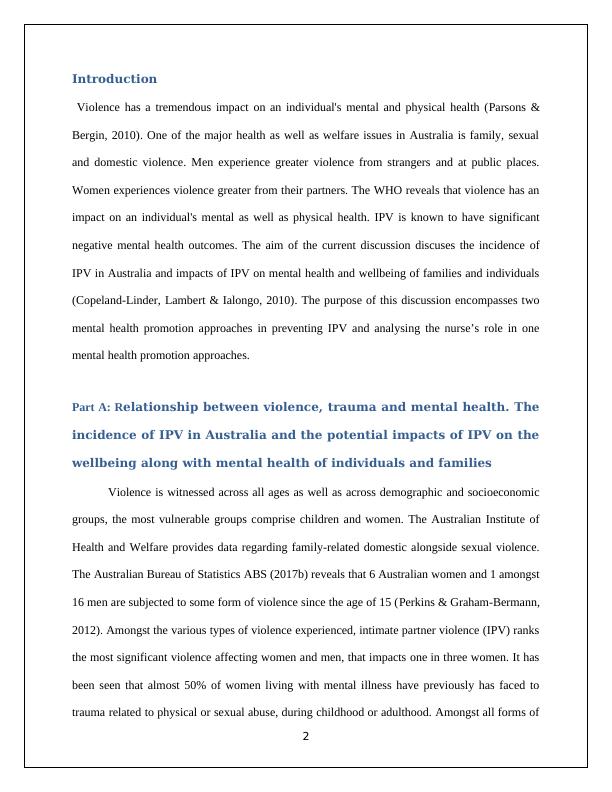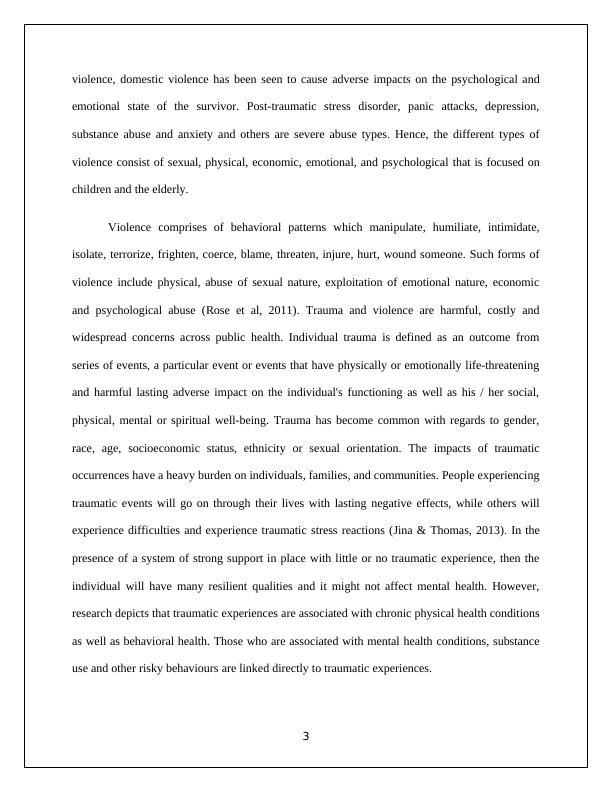Mental Health Promotion: Preventing IPV and the Role of Nurses
Research and critically analyze violence, IPV, and mental health promotion strategies to prevent IPV.
13 Pages3381 Words413 Views
Added on 2022-12-18
About This Document
This article discusses the incidence of intimate partner violence (IPV) in Australia and its impact on mental health. It explores two mental health promotion approaches to prevent IPV and highlights the role of nurses in promoting mental health.
Mental Health Promotion: Preventing IPV and the Role of Nurses
Research and critically analyze violence, IPV, and mental health promotion strategies to prevent IPV.
Added on 2022-12-18
ShareRelated Documents
End of preview
Want to access all the pages? Upload your documents or become a member.
Trauma-Informed Care
|12
|3512
|120
Socioeconomic and Psychological Factors Leading to Domestic Violence
|9
|2555
|89
Domestic Violence in Global and Australian Context
|9
|2429
|387
Mental Health Promotion: Types of Violence and Impact on Mental Health
|14
|3875
|3
A case study on Post traumatic stress disorder
|11
|3847
|2
Domestic Violence and Mental Health - PDF
|7
|2072
|217




